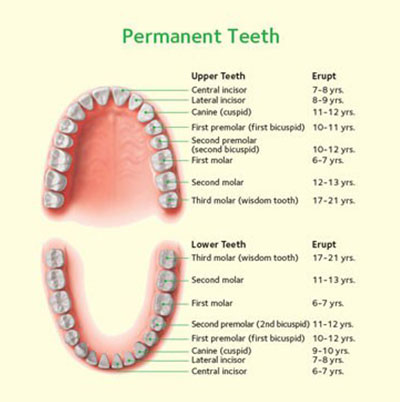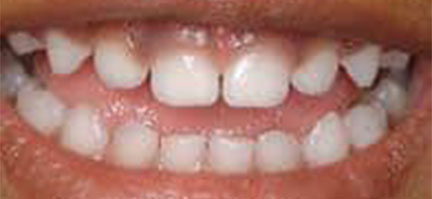Children need strong, healthy teeth to chew their food, speak and smile. Your child’s teeth also help give his or her face its shape and keep space in the jaw for adult teeth.
A baby’s teeth start to come in when the baby is about six months old. Baby teeth will later be lost one by one. This makes space for adult (permanent) teeth. By the time children are teenagers, they usually have all of their adult teeth. The last four teeth that come in are the wisdom teeth.
The charts below tell the names of the baby and adult teeth. The pictures show when each tooth usually comes in and is lost. But not all children get the same teeth at the same times. Your child’s teeth may erupt earlier or later than the ages in these charts.






